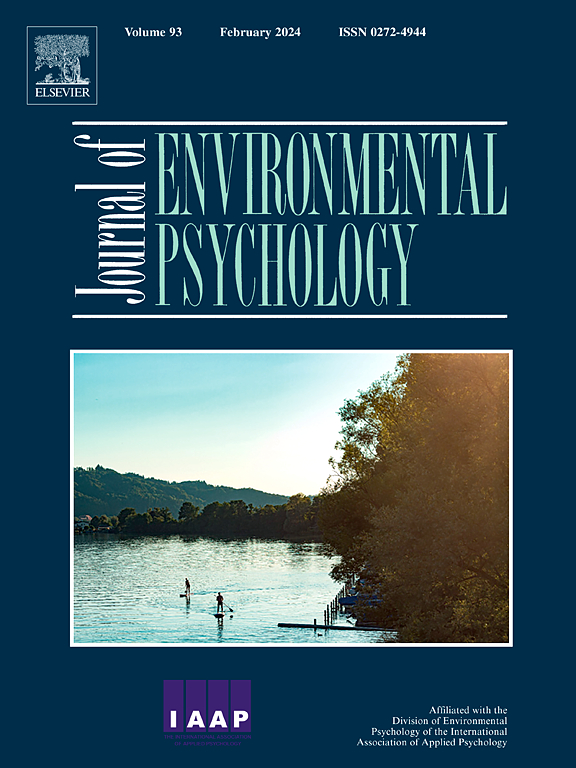How to visualize the spatial uncertainty of landmark representations in maps?
IF 6.1
1区 心理学
Q1 ENVIRONMENTAL STUDIES
引用次数: 0
Abstract
Landmark representations in maps play an important role in spatial tasks such as self-localization, spatial orientation, and navigation. By matching landmarks to their map representations, people can identify their current location and orientation within a map. However, spatial inaccuracies of landmark representations like these of pictograms in maps have been found to affect the ability to successfully match spatial environments to their map representations. These map matching difficulties could negatively affect the performance in spatial tasks. Due to the increasing number of data sources used in modern map services, for example provided by volunteers, map data quality has become more heterogeneous and uncertain. Therefore, solutions for counteracting the negative effects of spatially inaccurate landmark representations on map matching are required. Here, we report two studies that investigate whether visualizing spatial landmark uncertainty can improve map matching. Although suggestions for visualizing uncertainty exist, there is no empirical evidence whether they can intuitively communicate spatial uncertainty of landmark representations. If map users are made aware of potential spatial inaccuracies in a map, they may observe small or moderate spatial inaccuracies of landmark representations but still be able to match these to the represented landmarks. Our findings support this assumption. Using pictogram size, transparency, or circular uncertainty areas around pictograms to communicate spatial uncertainty increased the likelihood of a perceived match between 3D environments or 360° images and a corresponding map representation when landmark representations were spatially inaccurate. Furthermore, our findings indicate that, in addition to landmarks, people use spatial reference points such as road segments for map matching. Thus, if sufficient other spatial reference points are available both in the environment and its map representation, negative effects of spatially inaccurate landmark representations on map matching may be less severe.
如何将地图中地标表征的空间不确定性可视化?
地图中的地标表征在自我定位、空间定向和导航等空间任务中发挥着重要作用。通过将地标与地图表征相匹配,人们可以确定自己在地图中的当前位置和方向。然而,人们发现地图中象形图等地标表征的空间不准确性会影响人们将空间环境与其地图表征成功匹配的能力。这些地图匹配困难可能会对空间任务的表现产生负面影响。由于现代地图服务中使用的数据源越来越多,例如由志愿者提供的数据源,地图数据的质量变得更加异构和不确定。因此,我们需要解决方法来抵消空间上不准确的地标表示对地图匹配的负面影响。在此,我们报告了两项研究,探讨空间地标不确定性可视化是否能改善地图匹配。虽然存在将不确定性可视化的建议,但没有经验证明它们是否能直观地传达地标表征的空间不确定性。如果让地图用户意识到地图中潜在的空间不确定性,他们可能会观察到地标表征的小幅或中幅空间不确定性,但仍能将这些不确定性与所表征的地标相匹配。我们的研究结果支持这一假设。当地标表征在空间上不准确时,使用象形图的大小、透明度或象形图周围的圆形不确定区域来传达空间不确定性,会增加三维环境或 360° 图像与相应地图表征之间的感知匹配可能性。此外,我们的研究结果表明,除了地标之外,人们还使用诸如路段等空间参考点来进行地图匹配。因此,如果在环境及其地图表示中都有足够的其他空间参考点,那么空间上不准确的地标表示对地图匹配的负面影响可能会较小。
本文章由计算机程序翻译,如有差异,请以英文原文为准。
求助全文
约1分钟内获得全文
求助全文
来源期刊

Journal of Environmental Psychology
Multiple-
CiteScore
10.60
自引率
8.70%
发文量
140
审稿时长
62 days
期刊介绍:
The Journal of Environmental Psychology is the premier journal in the field, serving individuals in a wide range of disciplines who have an interest in the scientific study of the transactions and interrelationships between people and their surroundings (including built, social, natural and virtual environments, the use and abuse of nature and natural resources, and sustainability-related behavior). The journal publishes internationally contributed empirical studies and reviews of research on these topics that advance new insights. As an important forum for the field, the journal publishes some of the most influential papers in the discipline that reflect the scientific development of environmental psychology. Contributions on theoretical, methodological, and practical aspects of all human-environment interactions are welcome, along with innovative or interdisciplinary approaches that have a psychological emphasis. Research areas include: •Psychological and behavioral aspects of people and nature •Cognitive mapping, spatial cognition and wayfinding •Ecological consequences of human actions •Theories of place, place attachment, and place identity •Environmental risks and hazards: perception, behavior, and management •Perception and evaluation of buildings and natural landscapes •Effects of physical and natural settings on human cognition and health •Theories of proenvironmental behavior, norms, attitudes, and personality •Psychology of sustainability and climate change •Psychological aspects of resource management and crises •Social use of space: crowding, privacy, territoriality, personal space •Design of, and experiences related to, the physical aspects of workplaces, schools, residences, public buildings and public space
 求助内容:
求助内容: 应助结果提醒方式:
应助结果提醒方式:


